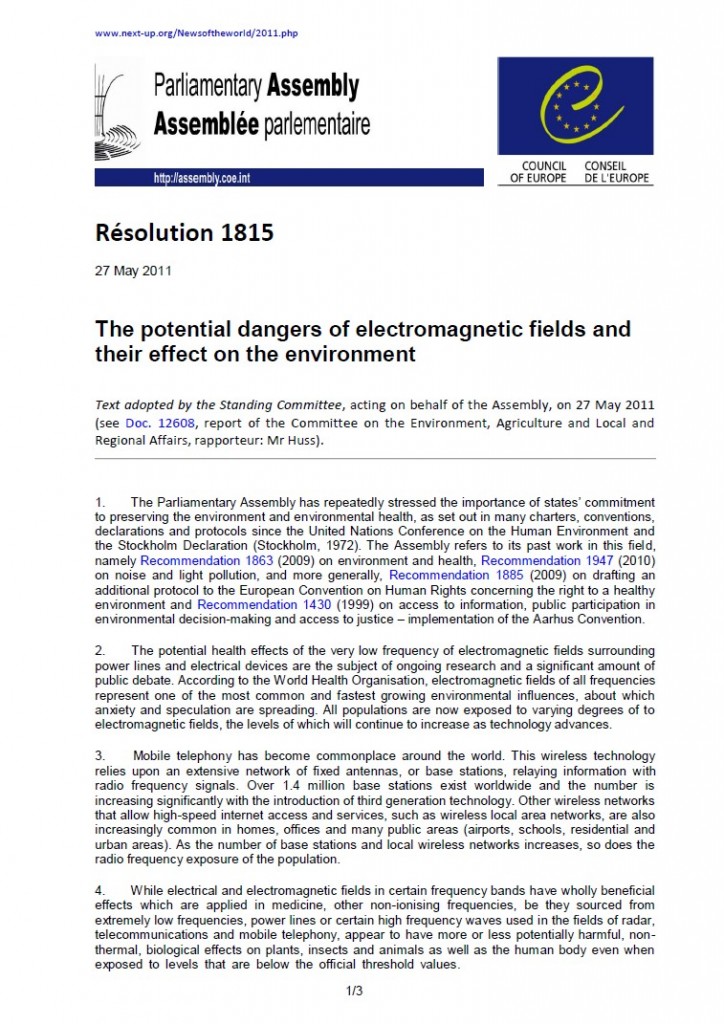Portada del sitio > Fauna > High frequency (900 MHz) low amplitude (5 V m-1) electromagnetic field: a (...)
Planta. 2008 Mar;227(4):883-91
High frequency (900 MHz) low amplitude (5 V m-1) electromagnetic field: a genuine environmental stimulus that affects transcription, translation, calcium and energy charge in tomato.
Viernes 12 de octubre de 2012 · 10887 lecturas
Planta. 2008 Mar;227(4):883-91. Epub 2007 Nov 20.
High frequency (900 MHz) low amplitude (5 V m-1) electromagnetic field: a genuine environmental stimulus that affects transcription, translation, calcium and energy charge in tomato.
Roux D, Vian A, Girard S, Bonnet P, Paladian F, Davies E, Ledoigt G.
Source
EA 3296 ERTAC, Université Blaise Pascal, Campus universitaire des Cézeaux, 63177 Aubiere Cedex, France.
Abstract
Using an especially-designed facility, the Mode Stirred Reverberation Chamber, we exposed tomato plants (Lycopersicon esculentum Mill. VFN8) to low level (900 MHz, 5 V m(-1)) electromagnetic fields for a short period (10 min) and measured changes in abundance of three specific mRNA soon after exposure. Within minutes of electromagnetic stimulation, stress-related mRNA (calmodulin, calcium-dependent protein kinase and proteinase inhibitor) accumulated in a rapid, large and 3-phase manner typical of an environmental stress response. Accumulation of these transcripts into the polysomal RNA also took place (indicating that the encoded proteins were translated) but was delayed (indicating that newly-synthesized mRNA was not immediately recruited into polysomes). Transcript accumulation was maximal at normal Ca(2+) levels and was depressed at higher Ca(2+), especially for those encoding calcium-binding proteins. Removal of Ca(2+) (by addition of chelating agents or Ca(2+) channel blocker) led to total suppression of mRNA accumulation. Finally, 30 min after the electromagnetic treatment, ATP concentration and adenylate energy charge were transiently decreased, while transcript accumulation was totally prevented by application of the uncoupling reagent, CCCP. These responses occur very soon after exposure, strongly suggesting that they are the direct consequence of application of radio-frequency fields and their similarities to wound responses strongly suggests that this radiation is perceived by plants as an injurious stimulus.
PMID:
18026987
[PubMed - indexed for MEDLINE]
Ver el abstract original AQUÍ







